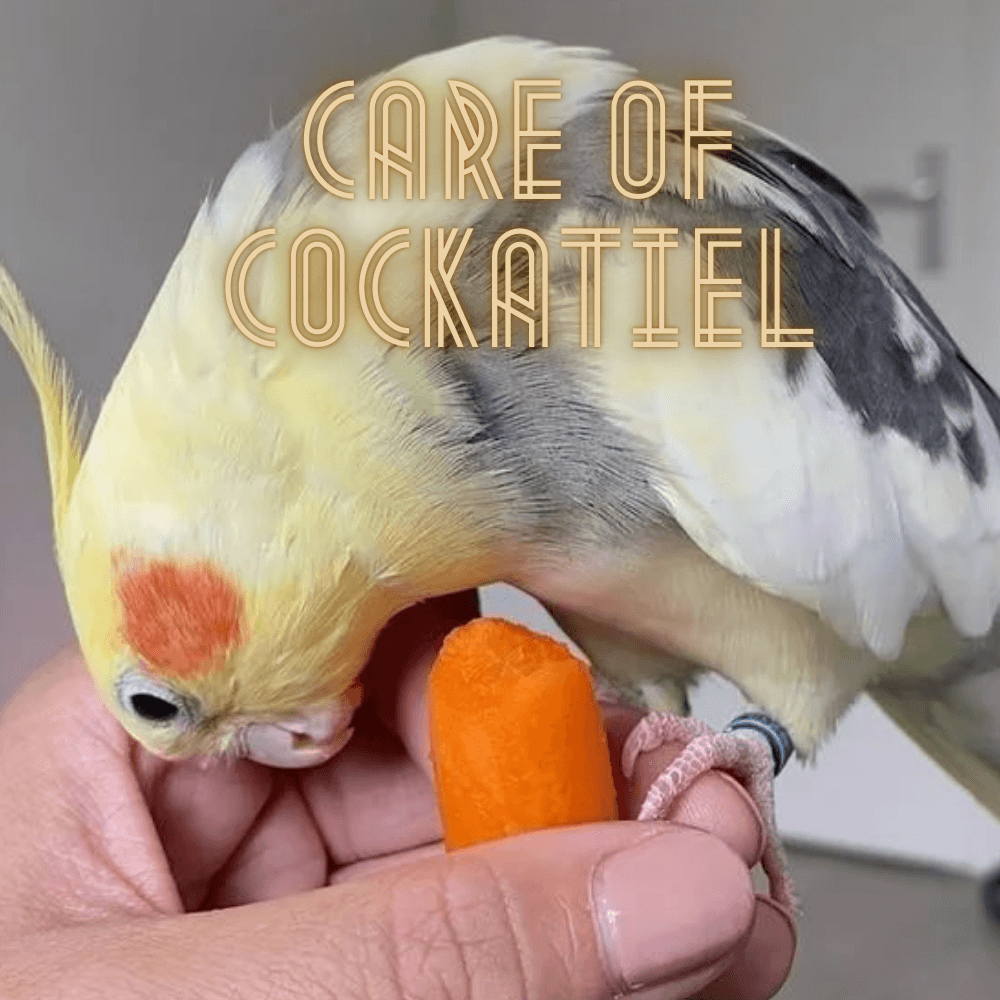
Care of cockatiel, It is very easy to want to adopt a cockatiel. Between her original and expressive physique, her sociable character, and her intelligence, she has it all!
To adopt a companion bird and Care for a cockatiel, it is useful to know it well in order to make the right decision and give it the best living condition. Thus, you will make him happy and establish a real bond with him. Discover the portrait of the cockatiel.
History of the cockatiel
The scientific name for the cockatiel is Nymphicus hollandicus. It is part of the order Psittaciformes, in which we also classify other parakeets and parrots. It is also called elegant Cockatiel, or Cockatiel in English.
Its country of origin is Australia, like other species of parakeet such as the budgie. She still lives there today, mainly inland over almost the entire territory, little on the coasts.
After the colonization of Australia by the Europeans in the 18th century, the latter brought back to Europe the first specimens of cockatiels by boat.
It was in 1832 that we find the trace of the first description of the cockatiel. It was the German zoologist Johann Georg Wagler who made it, although other people had observed it before.
These birds then became very popular! Currently, there are an estimated one million birds of this species in the world.
The life expectancy of a cockatiel is about 15 years. Some can live up to 20 years. The more it benefits from optimal living conditions, the longer its lifespan!
Want to know more? Discover our article on cockatiel lifespan.
Cockatiel Colours
Physical characteristics
It is easy to recognize a cockatiel immediately, thanks to its physique! Its body is generally gray in color, and its wings, also gray, have white stripes.
Its originality is at the level of its head. Indeed, it is largely yellow with two red-orange spots on the cheeks, round in shape.
In addition, it has on the top of the skull a crest (or crest), also yellow in color. The cockatiel can sometimes express its mood of the moment through the positioning of its crest …
The yellow color on the head is often more marked in males than females. In addition, the latter has marks or streaks under the tail feathers (more or less noticeable…). Be aware that before the age of 6 months, it is difficult to distinguish a male cockatiel from a female cockatiel.
You can find other colors among the tame cockatiels. These color variations are called mutations, relative to the wild type corresponding to the original gray color. We observe for example the colors silver, cinnamon (or cinnamon), lutinos, pearl, or pie.
In female lutinos, white or pale yellow, we can observe yellow dots under the wings and touches of yellow also under the tail.
As for the white-faced cockatiels, they have the particularity of not having red circles on the cheeks, but a white mask, except for the female which is all gray. The top of the skull and the crest are gray.
It is taller than its cousin the budgie since it measures 30 to 40 centimeters. Its weight varies between 80 and 150 grams.
Cockatiel Care Guide | Everything You Need To Know!
SOURCE:BirdNerdSophie
Character and behavior
The Cockatiel has a sociable character and will enjoy family life. She is intelligent, observant, shows curiosity, and loves to play. She’ll get attached to you pretty quickly, especially if you take her young. She will demand your attention and enjoy seeing activities with you. If you’ve never had a pet bird before, you can start with cockatiels that are well tamed.
Before making the decision to adopt cockatiels, check if your surroundings are sensitive to noise! Because the parakeet can be relatively talkative and noisy, especially by its whistling. But you can have a good time watching it because it is very expressive!
It is advisable to adopt two cockatiels at the same time. These birds of gregarious instinct, prefer to live in groups than alone. Moreover, in nature, the elegant cockatiel lives in communities of a few dozen specimens.
A single parakeet will tend to be boring. Prefer a couple rather than two males, who might get along less well.
Check out our article on choosing a male or female parakeet to find out more!
Raising a cockatiel
When adopting a cockatiel, you may have a choice between a cockatiel that is hand-raised and one raised by its parents. In the first case, she will already be “tamed”, that is to say, accustomed to being human. She will know how to interact with you quickly and her period of adaptation to your home will be brief.
Want to know more? Discover our article on Hand Breading parakeets.
In the other case, you will tame it yourself: with patience, it is quite possible! Education will be easier if you take a young cockatiel : it will remember what you teach it better, and you can bond faster.
Cockatiel diet
During the first few days, let her familiarize herself with her new surroundings. Give her only food and drink, without trying to interact with her. Then offer him a treat by passing his fingers between the bars of the cage.
what can a cockatiel eat:
If she does not accept the first time, repeat the operation a little later. When she starts to come in and eat the treat, do the same by opening the cage and running your hand inside.
Then, you can try to attract it towards you by offering your finger as a perch, always with a treat. Confidence will gradually build up! Eventually, the cockatiel will come to you on its own, without the treat.
Want to know more ? Check out our article on how to adopt a parakeet .

Predict the arrival of a cockatiel
Before welcoming your new feathered friend, plan a sufficiently large cage. The more spacious it is, the more comfortable and happy the parakeet will be. For example, it can spread its wings and fly at a minimum. For example, you will find in our stores the 10 best parrot cages which will suit cockatiels.
Jardiland advice: even if the cage is large, the little bird needs to be physically active outside. Take him out once a day to a closed, secure room, for at least an hour.
You will have several perches and Parrot toys inside. Because cockatiels are used to nibbling or pecking anything they can find! In addition, toys provide them with moments of activity and distraction. You can opt for a wooden and rope toy, a ladder, a hanging net, or even a swing.
Among the elements not to forget, the bathtub will allow your birds to clean themselves and splash around.
Also, think about where you will place the cage. Choose a place to live, where you will be present often. Because the cockatiel loves company ! You will protect it from drafts because small birds are sensitive to it.
On the other hand, prepare the daily food that you will give to your little companions. It consists mainly of mixtures of seeds specific to the species, as well as certain fruits and vegetables.
In addition, hang a bunch of millet (source of food and occupation for the parakeet) as well as a cuttlebone from the cage for the supply of calcium and minerals. On the other hand, the trough will contain fresh water that is renewed every day.
Want to know more ? Check out our article on how to properly feed your parakeet .
When your elegant cockatiels have entered your home, you will ensure their hygiene, in particular by cleaning their cage and its accessories once a week. You will also take care to change the bottom of the cage and renew the contents of the feeders every day.
Check out our article on how to take care of your parakeet, to learn more.
In order to preserve wildlife, the animal you have just acquired must not be released into the natural environment.
Can cockatiels eat bananas?
Cockatiels love fruit, and this gives you a good opportunity to socialize with your bird, in addition to varying their food. … The fruits should be distributed in small quantities because they contain sugar and can cause diarrhea.
Can cockatiels eat fruit?
Cockatiel parakeet feeding
Fruits and vegetables, especially green vegetables, will provide him with all the vitamins necessary for his good health. If you can’t give him fruit, apple juice diluted in water can be used instead.




















